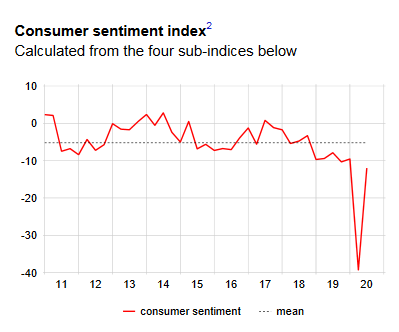26.11.2020 – From 2021, the price indices published by the Federal Statistical Office (FSO) will be armed with an updated methodology that reflects market changes as closely as possible. Furthermore, a new price index will be added to the existing set, measuring residential property price change, which will be published on a quarterly basis. These economic indicators are very important, both for economic and monetary policy and for the indexation of monetary values (wages, pension, contracts and budgets). The standard baskets and the structures of the Consumer Price Index, the Producer and Import Price Index and the Construction Price Index have all been updated; data collection techniques and sources have been modernised and their dissemination improved. Price
Topics:
Swiss Statistics considers the following as important: 2.) Swiss Statistics - Press Releases, 2) Swiss and European Macro, Featured, newsletter
This could be interesting, too:
Nachrichten Ticker - www.finanzen.ch writes Die Performance der Kryptowährungen in KW 9: Das hat sich bei Bitcoin, Ether & Co. getan
Nachrichten Ticker - www.finanzen.ch writes Wer verbirgt sich hinter der Ethereum-Technologie?
Martin Hartmann writes Eine Analyse nach den Lehren von Milton Friedman
Marc Chandler writes March 2025 Monthly

26.11.2020 – From 2021, the price indices published by the Federal Statistical Office (FSO) will be armed with an updated methodology that reflects market changes as closely as possible. Furthermore, a new price index will be added to the existing set, measuring residential property price change, which will be published on a quarterly basis.
These economic indicators are very important, both for economic and monetary policy and for the indexation of monetary values (wages, pension, contracts and budgets). The standard baskets and the structures of the Consumer Price Index, the Producer and Import Price Index and the Construction Price Index have all been updated; data collection techniques and sources have been modernised and their dissemination improved.
Price statistics are used to index amounts that run to hundreds of millions of francs. They are one of the key pillars in economic and monetary policy. For them to remain relevant and in touch with reality, they are rigorously revised and improved every five years: all goods and services considered are updated on the basis of the most recent data, data collection sources and techniques are adjusted to further improve their quality and to lessen the burden on data suppliers.
Extended range, electronic data
From 2021, new products will be included in the consumer price index standard basket: gambling and betting (lotteries, casinos); museum and zoo admissions; vehicle and navigation rental services, lawyers and solicitors; air purifiers, disposable hygienic masks, hand sanitisers; robot vacuum cleaners, electric bikes and connected watches. Other items, with falling consumption, will be removed: textiles for clothing, haberdashery and knitting yarn, video projectors, optical instruments and portable video game consoles.
The use of electronic data from mass retailers (scanner data) will be extended to the non-food sector and to fuel. Electronic data from major real estate agencies will be used to measure housing rental change, instead of the traditional survey (eSurvey and/or paper questionnaires). Online surveys will be intensified and web scraping will be introduced.
Administrative data and services
Administrative data from customs and excise (export and import declarations) will be used to measure change in the export prices of pharmaceutical specialities. Furthermore, measurement of production price change in the service sector will continue to be expanded: some twenty indicators are already currently available. Testing will begin on the use of electronic data exchanged between planners and enterprises in the construction sector, to replace the direct survey of enterprises.
New official residential property index
With its new official residential property price index, the FSO is filling a gap in official price statistics. The real estate sector is a very important sector, closely tied to economic development. This new economic indicator will be used to monitor financial market stability, monetary policy, inflation control and to observe property price change.
Transaction price changes will be published on a quarterly basis for single-family houses and condominiums, by five municipality types (urban municipality of a large agglomeration, urban municipality of a medium-sized agglomeration, urban municipality of a small or outside agglomeration, intermediate municipality and rural municipality).
7000 transactions per quarter
The data used to calculate the index are supplied by the main mortgage-lending institutions in Switzerland, which have information of the required quality and the necessary structural variables. Location variables are provided by the FSO and used by the data suppliers to enrich their data. For the modelling, some 80 000 transactions were collected electronically between 2017 and 2019. In 2020, an average of 7000 transaction per quarter were used to measure price change.
Every property is different and the same property is never sold twice. To ensure that only price changes are measured, qualitative differences between properties from one quarter to the next have to be neutralised. To do this, a hedonic model was developed, i.e. a model that shows the transaction price according to the different qualitative characteristics of the property.
The results will be published roughly six weeks after the end of the period under observation, in a press release and on the internet. Also available on the internet: an explanatory brochure, a methodology report as well as detailed documentation of the hedonic modelling.
Tags: Featured,newsletter








